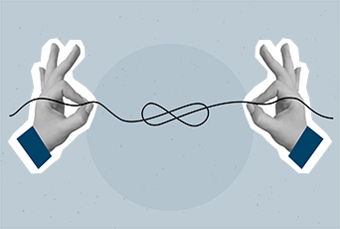Surprise! A recent agreement was reached between Congress and the White House regarding the federal government’s budget and borrowing limits. In this period of hyper-polarization between the two major political parties, this bipartisan compromise sidesteps a near-term fiscal crisis and a potential government shutdown. But does it have long-term merit and impose a ceiling on future debt, or is it just a stop-gap measure that rolls back the sunroof and lets the sky be the limit for future debt accumulation?
What’s in the Deal?
This compromise is a two-year deal that provides for more than $2.7 trillion in discretionary spending. In effect, it increases spending by $320 billion above the levels established by the current deal known as the 2011 “sequester”. It also temporarily suspends the federal government’s debt ceiling, which legislatively imposes a cap on the total amount of debt the government can accumulate (currently around $22 trillion), until July 2021.
Why are both Republicans and Democrats satisfied with the latest deal? In a nutshell, it effectively removes U.S. budget and debt concerns as an issue from the 2020 presidential campaign trail. It also provides each side with concessions that can be touted as talking points to supporters. Republicans can highlight the large increases to military spending as a benefit to the country’s “national defense.” Democrats can hail the agreement’s protection of various domestic social programs and ending what House Speaker Nancy Pelosi and Minority Senate Leader Chuck Schumer refer to as the “devastating cuts” to spending that would result from the 2011 sequester agreement.
While politically advantageous in the short term, the latest deal’s long-term implications for addressing the growing debt problem are less rosy.
Debt Ceiling Crisis “Averted”
So, how did we get to this point? Since Congress created the debt ceiling in 1939 as World War II loomed over the globe, evidence that it has restrained the nation’s debt growth has been minimal. For much of history, the debt ceiling was raised to higher and higher levels without attracting much political rancor.
But in 2011, increasing debt levels and federal spending became hot-button issues and therefore the focus of considerable political theater, resulting in what became known as the “sequester". The sequester, which took effect in 2013, mandated that across-the-board spending cuts be implemented in exchange for a one-time increase in the debt ceiling. However, since 2013 this is the fifth time Congress has reached a deal to reverse those cuts, allowing government spending to continue on its upward trajectory.
In addition to the increased spending, another crucial part of the recent deal was the outright suspension of the national debt ceiling until 2021. This removes the legislatively self-imposed limit on how much debt the U.S. government is allowed to take on during that time to pay for its expenditures. Since 1981, when it was slightly higher than $1 trillion, the debt ceiling has been increased every time the limit was reached—that’s a mind-staggering 26 times! Since 1960, it has been increased or suspended 87 times! Rather than a debt ceiling that caps spending, it seems more like the government is operating a debt sunroof that is opened whenever space gets tight!
Does the Debt Level Really Matter?
Currently the U.S. national debt is over $22.5 trillion, or approximately 104 percent of Gross Domestic Product. Fiscal hawks – those pushing for reductions in government spending – are often criticized as advocating policies that would be detrimental to the health of the economy. But studies, including those from the Congressional Budget Office (CBO) and the U.S. Treasury, suggest a national debt that’s too large can negatively impact the economy by lowering long-term growth rates and placing downward pressure on stock prices. Further, excessive debt can decrease a government’s credit worthiness, as investors typically associate buying that debt with higher levels of risk and greater likelihood of default. This can make the economy more susceptible to fiscal pain should interest rates rise as investors seek to be compensated for this additional risk.
Conclusion
While there’s little willingness in Washington to address these systematic issues, failing to do so is likely to lead to more difficult and painful choices in the future. The recent deal does not even pretend to confront any of these issues head on. Instead, the deal shows us that bipartisanship is most likely in situations where making difficult decisions can be postponed. Whether spending will be capped by the next ceiling or continue its growth through the debt sunroof is now a question for 2021—at the earliest.
Recommended Articles
Private Equity and M&A in a Low-Rate World
Deal flow is the stream of business proposals, investment...
The Bonds that Tie – An Exciting Look at Fixed Income
With today’s yields being much higher than the close to...
Is America’s Tariff War Reshaping the U.S. Economy?
The 2025 tariff regime marks the highest average...





